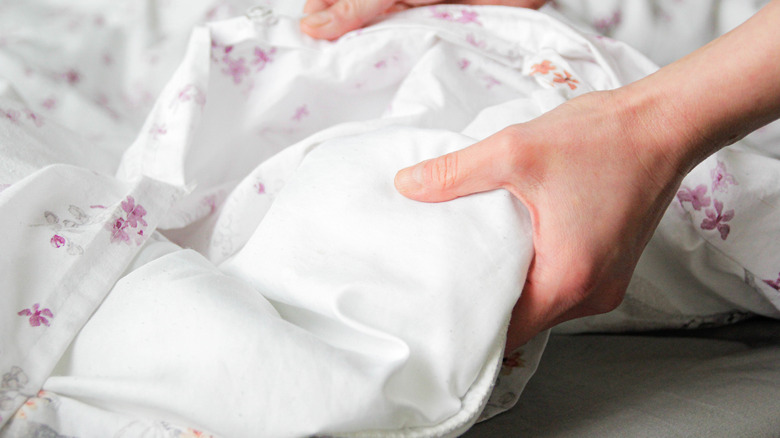How Does Down Alternative Compare To Real Down Comforters?
Finding the perfect, cozy comforter helps you stay at an ideal temperature while you sleep. When replacing your bedding, you'll encounter several options. Real down and down alternative comforters might sound similar, but their composition and performance are different. Both types feature exterior covers made of a variety of soft fabrics with filler materials designed for warmth. Real down comforters use the soft, cotton-like duck and goose feathers that are below the outer visible feather layer. Down alternative comforters contain fill that's made of natural or synthetic fibers, often polyester microfiber, that replicate the texture and feel of real down. Differences between real down and down alternative comforters come from the fill materials.
Down creates a durable filling with breathable, natural insulation, making it a warm comforter option. Down comforters with high fill counts could feel too warm due to less breathability. Down alternative filling is typically highly breathable to keep you from overheating or feeling stuffy, making it a good option to keep your bedding cool this summer. However, down alternative lacks insulating power compared to real down, so it may require more filling to keep you warm, which could make the blanket feel heavier.
You might notice that down alternative comforters aren't as fluffy as real down options. People who prefer down comforters are often drawn to the lofty, fluffy, plush feel. While high-quality down alternatives come close to the real thing, it's difficult to create an exact match to the texture of real down.
Choosing between real down and down alternative comforters
Down comforters tend to cost more than down alternative because they use feathers, which come from specific sources and take time to collect and prepare. You can expect to pay between $80 and over $850 for real down, according to Amerisleep. Down alternative comforters often start around $50 and run up to $250 or more.
While down itself may not cause allergic reactions more than down alternative, down could create a build-up of allergens. The feathery material traps allergens, such as pet dander and dust mites, more than down alternative, which often uses hypoallergenic fill materials. If you prefer real down, choose bedding with washed down, which removes many potential allergens.
Another deciding factor is the care. You can wash down alternative comforters in your home washing machine. Real down isn't as easy. When deciding how to clean your down comforter, start by reading the label, which may recommend professional cleaning. Dry cleaning generally isn't recommended due to the potential for damage from the chemicals. Instead, use an extra-large washer at the laundromat or have a dry cleaner wash it professionally in larger machines. You typically need to wash a down comforter every one to two years without a duvet cover or every three to five years with a duvet cover. Meanwhile, down alternative comforters generally need to be washed once or twice a year even with a duvet cover. The extra washing could cause down alternative bedding to wear out sooner.

